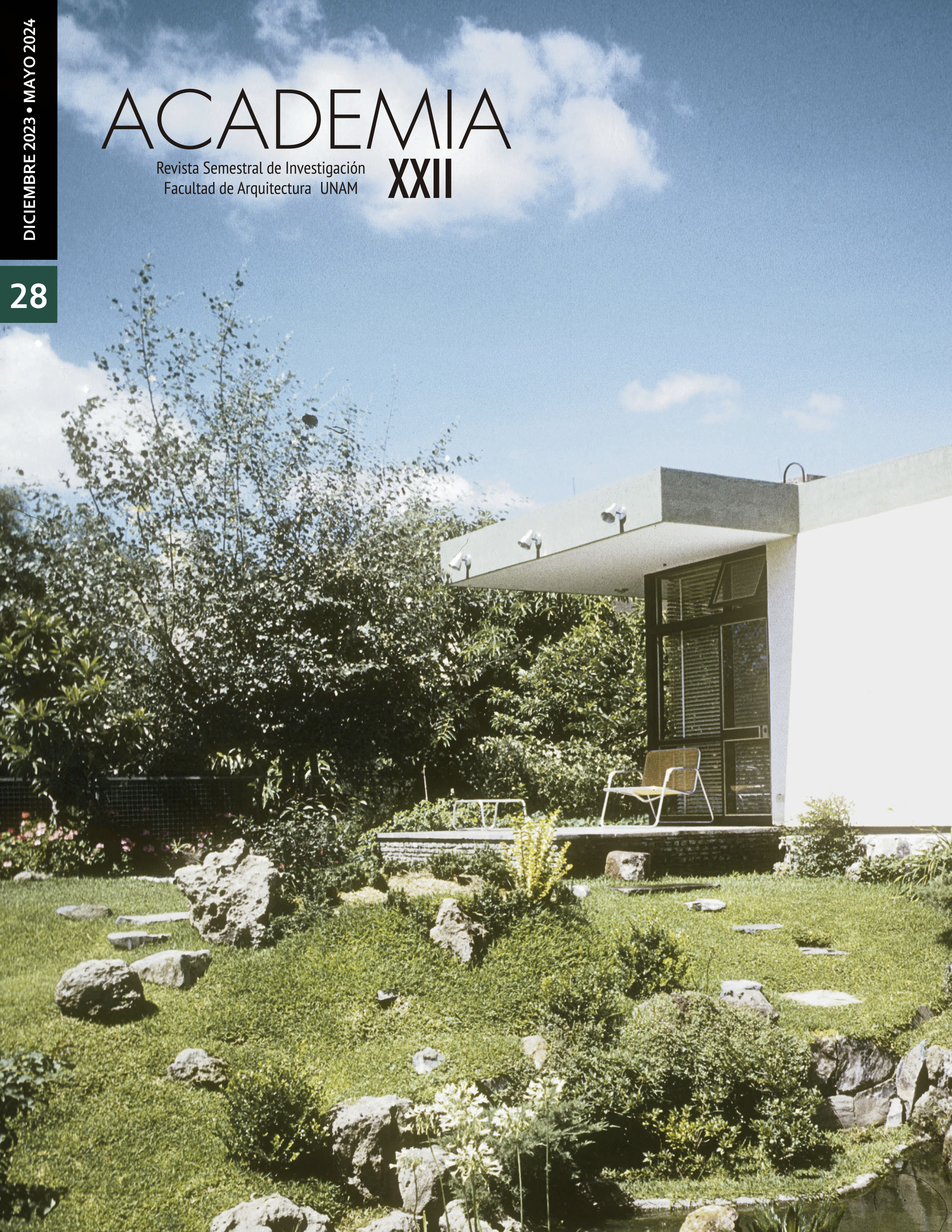La arquitectura como sistema natural. El pensamiento informacional, la mutación ontológica del objeto y la biologización de la arquitectura
Contenido principal del artículo
Resumen
En la era digital se han multiplicado las investigaciones en arquitectura de inspiración biológica. El artículo desarrolla la tesis de que las concepciones arquitectónicas subyacentes a estas exploraciones son el resultado de una mutación ontológica del objeto, derivada del marco cibernético. Además, plantea una reflexión en torno a la pregunta planteada por la convocatoria “verde: lo orgánico”, sobre si la adopción de la biología como modelo explicativo en la arquitectura puede permitir a la naturaleza actuar como agente conformador del entorno urbano-arquitectónico.
Descargas
Detalles del artículo
Citas en Dimensions Service
Citas
ALEXANDER, CHRISTOPHER
Notes on the Synthesis of Form, Harvard University Press.
A pattern language: towns, buildings, construction, Oxford University Press.
BERTALANFFY, LUDWIG VON
“General systems theory”, The science of synthesis: exploring the social implications of general systems theory, vol. 103.
BOWKER, GEOF
“How to be universal: Some cybernetic strategies, 1943-70”, Social Studies of Science, vol. 23, núm 1, pp. 107-127.
BOULDING, KENNETH E.
“General systems theory—the skeleton of science”, Management science, vol. 2, núm 3, pp. 197-208.
BRAHAM, WILLIAM
“Biotechniques: Form Follows Flow?”, Departmental Papers (Architecture), p. 21.
GALISON, PETER
“War against the Center”, Grey Room, núm. 4, pp. 7-33.
HAYLES, N. KATHERINE
How we became posthuman: Virtual bodies in cybernetics, literature, and informatics.
HENSEL, MICHAEL U.
“Performance-oriented design from a material perspective: domains of agency and the spatial and material organization complex”, Performalism, Routledge, pp. 43-48.
JOSLYN, CLIFF Y FRANCIS HEYLIGHEN
“Cybernetics”, Encyclopedia of Computer Science, pp. 470-473.
KAY, LILY E.
Who wrote the book of life?: A history of the genetic code, Stanford University Press.
KWINTER, SANFORD
Architectures of time: Toward a theory of the event in modernist culture, MIT Press.
LAZLO, ERVI
The systems view of the world, Blackwell.
LEATHERBARROW, DAVID
“Architecture’s unscripted performance”, Performative Architecture beyond Instrumentality, pp. 7-19.
MOE, KIEL Y R. SMITH
“Introduction: systems, technics, and society”, Building Systems: Design Technology and Society, pp. 1-10.
MORIN, E.
Introduction à la pensée complexe, Éditions du Seuil.
NEUMAN, ERAN Y YASHA J. GROBMAN
“Performalism: A manifesto for architectural performance”, Performalism, Routledge, pp. 3-7.
PICON, ANTOINE
“Digital culture in architecture”, Digital Culture in Architecture, Birkhäuser.
RAHIM, ALI
Catalytic formations: architecture and digital design, Taylor & Francis Group.
ROSENBLUETH, ARTURO, NORBERT WIENER Y JULIAN BIGELOW
“Behavior, purpose and teleology”2, Philosophy of science, vol. 10, núm 1, pp. 18-24.
ROVALETTI, MARÍA LUCRECIA
“Teoría general de los sistemas”, Signo y pensamiento, vol. 8, núm. 15, pp. 45-56.
SCHUMACHER, PATRIK
“Architecture’s next ontological innovation”, Tarp. No Nature, pp. 100-107.
SPRECHER, AARON
“Informationism: Information as architectural performance”, Performalism, Routledge, pp. 27-31.
WIENER, NORBERT
Cybernetics or Control and Communication in the Animal and the Machine, MIT Press.
The human use of human beings: Cybernetics and society, Da Capo Press.

Esta obra está bajo una licencia internacional Creative Commons Atribución-NoComercial-SinDerivadas 4.0.

